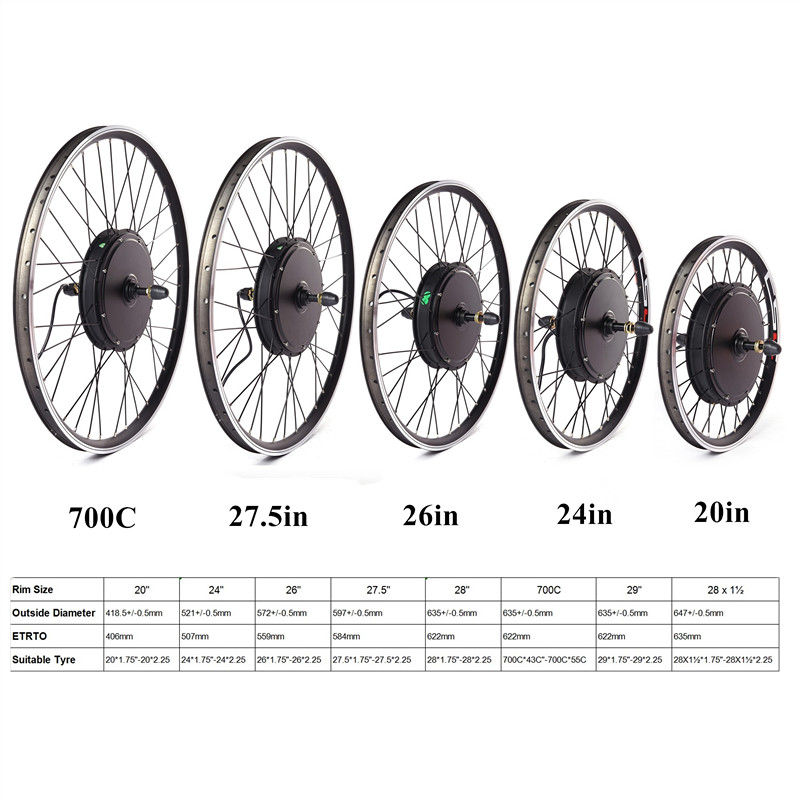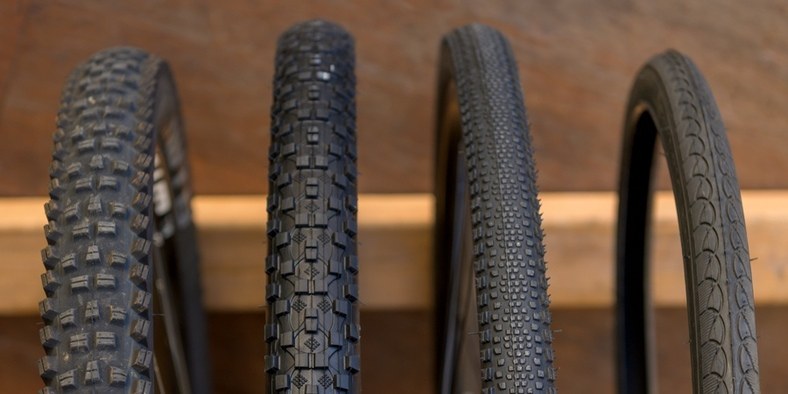Understanding Bike Tire Sizing: What You Need to Know
Bike tire sizing can be a complex and confusing topic, especially for those new to cycling. With various measurement systems and labeling conventions, it’s easy to get lost in the numbers. However, understanding bike tire sizing is crucial for ensuring a safe and enjoyable ride. In this article, we’ll delve into the basics of bike tire sizing, including the differences between metric and imperial measurements, and how to read tire size labels.
Most bike tires are labeled with a combination of numbers and letters, which can be overwhelming at first glance. For example, a tire labeled as “700x25c” might seem like gibberish to the uninitiated. However, breaking down this label reveals valuable information about the tire’s size and characteristics. The “700” refers to the tire’s diameter in millimeters, while the “25c” indicates the tire’s width in millimeters and its intended use (in this case, a narrow tire for road cycling).
In contrast, imperial measurements use inches to express tire size. For instance, a tire labeled as “27×1 1/4” uses inches to describe its diameter and width. While imperial measurements are still used in some parts of the world, metric measurements have become the standard in the cycling industry.
When it comes to 700 bike tires in inches, the conversion process can be a bit tricky. However, understanding the basics of bike tire sizing is essential for making informed decisions about your bike’s tires. By grasping the differences between metric and imperial measurements, you’ll be better equipped to navigate the world of bike tires and find the perfect fit for your ride.
In the next section, we’ll explore the step-by-step process of converting 700c tires to inches, including the calculation and conversion factors. We’ll also examine real-world examples of 700c tires in inches for popular bike models, providing you with a deeper understanding of how tire size affects your bike’s performance.
How to Convert 700c Tires to Inches: A Step-by-Step Guide
Converting 700c tires to inches can seem like a daunting task, but with the right tools and knowledge, it’s a straightforward process. To convert 700c tires to inches, you’ll need to understand the relationship between metric and imperial measurements. One inch is equivalent to 25.4 millimeters, so to convert a 700c tire to inches, you’ll need to divide the diameter by 25.4.
For example, let’s take the Continental Grand Prix 700x25c tire. To convert the diameter to inches, you would divide 700 by 25.4, which equals approximately 27.6 inches. The width of the tire, 25c, is already in millimeters, so you can convert it to inches by dividing by 25.4, which equals approximately 1 inch.
So, the Continental Grand Prix 700x25c tire is equivalent to a 27.6 x 1 inch tire. This conversion is essential for ensuring compatibility with your bike’s components, such as the wheels and brakes. By understanding how to convert 700c tires to inches, you can make informed decisions about your bike’s tires and ensure a safe and enjoyable ride.
It’s worth noting that some 700c tires may have slightly different conversion factors due to variations in manufacturing and design. However, the general formula of dividing the diameter by 25.4 remains the same. By using this formula and consulting the manufacturer’s specifications, you can accurately convert 700c tires to inches and find the perfect fit for your bike.
In the next section, we’ll explore the benefits of knowing your tire size in inches, including improved bike handling, increased safety, and better compatibility with bike components.
The Benefits of Knowing Your Tire Size in Inches
Knowing your tire size in inches can have a significant impact on your bike’s performance, safety, and overall riding experience. By understanding the relationship between tire size and bike components, you can optimize your bike’s setup for improved handling, increased safety, and better compatibility.
One of the primary benefits of knowing your tire size in inches is improved bike handling. When your tires are properly sized, your bike will respond more predictably to steering input, and you’ll enjoy a more stable and confident ride. This is especially important for riders who frequent technical trails or engage in high-speed descents.
In addition to improved handling, knowing your tire size in inches can also increase safety. When your tires are properly sized, you’ll be less likely to experience tire blowouts or other catastrophic failures. This is especially important for riders who carry heavy loads or ride in extreme conditions.
Better compatibility with bike components is another significant benefit of knowing your tire size in inches. When your tires are properly sized, you’ll be able to optimize your bike’s setup for improved performance and efficiency. This includes selecting the right wheels, brakes, and other components to match your tire size.
For example, if you’re riding a 700c tire with a diameter of 27.6 inches, you’ll want to select wheels and brakes that are compatible with this size. By doing so, you’ll be able to optimize your bike’s performance and enjoy a more efficient and enjoyable ride.
In the next section, we’ll explore common mistakes to avoid when converting 700c tires to inches, including incorrect calculations and misunderstandings about tire size labels.
Common Mistakes to Avoid When Converting 700c Tires to Inches
When converting 700c tires to inches, it’s easy to make mistakes that can affect the accuracy of the conversion. One common mistake is to assume that the tire size label is always accurate. However, tire size labels can be misleading, and it’s essential to understand the nuances of tire sizing to make accurate conversions.
Another common mistake is to use incorrect conversion factors. For example, some riders may use a conversion factor of 1 inch = 25.4 mm, which is close but not exact. The correct conversion factor is 1 inch = 25.39957 mm, which can make a significant difference in the accuracy of the conversion.
Additionally, riders may also make mistakes when calculating the tire size in inches. For example, they may forget to divide the diameter by 25.4 or may use the wrong formula. To avoid these mistakes, it’s essential to double-check calculations and use a reliable conversion tool or formula.
Furthermore, riders may also misunderstand the concept of tire size and width. For example, they may assume that a 700x25c tire is the same as a 27×1 inch tire, which is not always the case. The width of the tire can affect the overall size and performance of the tire, and it’s essential to understand these nuances to make accurate conversions.
By avoiding these common mistakes, riders can ensure accurate conversions and optimize their bike’s performance. In the next section, we’ll explore how to choose the right 700c tire size for your bike, including factors to consider such as bike type, riding style, and terrain.
How to Choose the Right 700c Tire Size for Your Bike
Choosing the right 700c tire size for your bike can be a daunting task, especially with the numerous options available in the market. However, by considering a few key factors, you can make an informed decision that will enhance your riding experience.
First and foremost, consider the type of bike you have. Different bikes require different tire sizes, and using the wrong size can affect the bike’s performance and safety. For example, a road bike typically requires a narrower tire size, such as 700x23c, while a mountain bike may require a wider tire size, such as 700x35c.
Riding style is another important factor to consider. If you’re a casual rider who sticks to paved roads, a narrower tire size may be sufficient. However, if you’re an aggressive rider who tackles rough terrain, a wider tire size may be necessary to provide the necessary traction and control.
Terrain is also a crucial factor to consider. If you ride on smooth roads, a narrower tire size may be sufficient. However, if you ride on rough terrain, such as gravel or dirt roads, a wider tire size may be necessary to provide the necessary traction and control.
Additionally, consider the width of your bike’s rim. A wider rim can accommodate a wider tire size, while a narrower rim may require a narrower tire size. It’s essential to check the manufacturer’s specifications to ensure compatibility.
By considering these factors, you can choose the right 700c tire size for your bike and enjoy a safer and more enjoyable ride. In the next section, we’ll explore real-world examples of 700c tires in inches for popular bike models, such as the Trek Domane or the Specialized Roubaix.
Real-World Examples: 700c Tires in Inches for Popular Bike Models
To illustrate the concept of converting 700c tires to inches, let’s consider a few real-world examples of popular bike models. For instance, the Trek Domane is a popular road bike that comes equipped with 700x25c tires. Using the conversion factor of 1 inch = 25.4 mm, we can convert the tire size to inches as follows: 700 mm / 25.4 mm/inch = 27.6 inches.
Similarly, the Specialized Roubaix is another popular road bike that comes equipped with 700x28c tires. Using the same conversion factor, we can convert the tire size to inches as follows: 700 mm / 25.4 mm/inch = 27.6 inches, and the width of 28c is equivalent to approximately 1.1 inches.
These examples demonstrate how to convert 700c tires to inches for popular bike models. By understanding these conversions, riders can make informed decisions about their bike’s tire size and optimize their ride for improved performance and safety.
Other popular bike models that use 700c tires include the Cannondale Synapse, the Giant TCR, and the Pinarello Dogma. By using the conversion factor and understanding the nuances of tire sizing, riders can make informed decisions about their bike’s tire size and optimize their ride for improved performance and safety.
In the next section, we’ll explore online tools and resources that can help with tire size conversions, including websites and apps that can simplify the process.
Tire Size Conversion Tools and Resources
Converting 700c tires to inches can be a complex process, but there are many online tools and resources available to simplify the process. One popular tool is the tire size conversion calculator, which can be found on many cycling websites. This calculator allows you to enter the metric tire size and convert it to inches, taking into account the various conversion factors and nuances of tire sizing.
Another useful resource is the tire size chart, which provides a comprehensive list of tire sizes and their corresponding inch measurements. This chart can be a valuable reference for riders who need to convert tire sizes frequently.
Additionally, there are many apps available that can help with tire size conversions, such as the Bike Tire Size Converter app or the Cycling Tire Size Calculator app. These apps can be downloaded onto your smartphone and provide a convenient way to convert tire sizes on the go.
Some popular websites that offer tire size conversion tools and resources include BikeRadar, Cycling Weekly, and Road Bike Action. These websites provide a wealth of information on tire sizing, including conversion charts, calculators, and articles on the subject.
By utilizing these online tools and resources, riders can easily convert 700c tires to inches and make informed decisions about their bike’s tire size. In the next section, we’ll summarize the key takeaways from the article and emphasize the importance of understanding tire size conversions for a better and safer riding experience.
Conclusion: Mastering 700c Tire Conversions for a Better Ride
In conclusion, converting 700c tires to inches is a crucial step in ensuring a safe and enjoyable riding experience. By understanding the basics of bike tire sizing, including the differences between metric and imperial measurements, and how to read tire size labels, riders can make informed decisions about their bike’s tire size.
Additionally, by following the step-by-step guide on how to convert 700c tires to inches, riders can accurately convert their tire size and avoid common mistakes. By choosing the right 700c tire size for their bike, riders can improve bike handling, increase safety, and ensure better compatibility with bike components.
Real-world examples of 700c tires in inches for popular bike models, such as the Trek Domane or the Specialized Roubaix, can provide valuable insights and help riders make informed decisions. Online tools and resources, such as tire size conversion calculators and charts, can also simplify the process and provide a convenient way to convert tire sizes.
By mastering 700c tire conversions, riders can enjoy a better and safer riding experience. Whether you’re a seasoned cyclist or just starting out, understanding tire size conversions is essential for getting the most out of your bike. By following the guidelines and tips outlined in this article, riders can ensure a safe and enjoyable ride, and get the most out of their 700 bike tires in inches.









